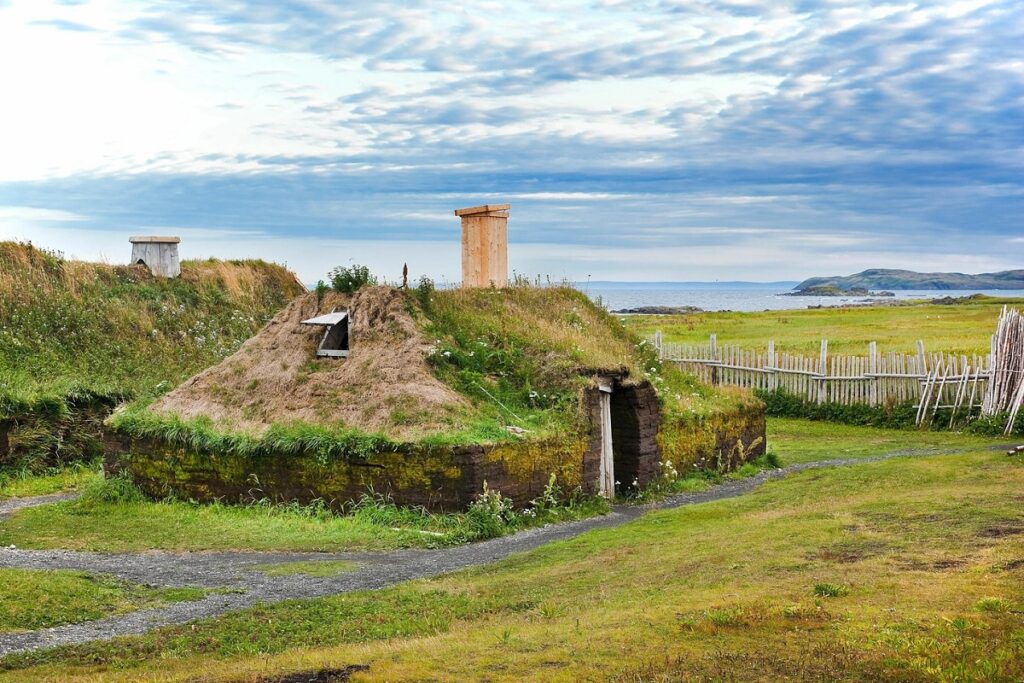When discussing the discovery of America, it’s hard to overlook the name Christopher Columbus, whose narrative dominates historical accounts. We’ve all heard about how Columbus “discovered” the Americas in 1492. However, what if this well-trodden tale omits a crucial chapter? Enter the Vikings, who set foot in North America well before Columbus. Let’s delve into this captivating historical discourse and explore the evidence that points to the true pioneers of the New World.
The Vikings’ Arrival in North America
Long before Columbus took to the seas, a band of Vikings, led by the iconic explorer Leif Erikson, are believed to have reached the coasts of North America. Their landing site? L’Anse aux Meadows, located on the island of Newfoundland, Canada. This groundbreaking discovery can be traced back to 1021, nearly five centuries prior to Columbus’s journey.
In the early 1960s, Norwegian archaeologists Anne Stine and Helge Ingstad made a remarkable finding at L’Anse aux Meadows. They uncovered structures and artifacts that strongly hinted at Viking occupation, including tools and buildings reminiscent of traditional Viking settlements. This discovery marked the first concrete evidence of Viking presence in North America, confirming that they had explored territories far beyond their known outposts in Greenland and Iceland.
The Viking Sagas: A Window into Their Journeys
Much of our knowledge regarding the Vikings’ North American explorations stems from ancient sagas penned in Iceland and Greenland. These sagas, particularly The Saga of Erik the Red and The Saga of the Greenlanders, narrate tales of Viking journeys to a land they named Vinland, which we now associate with present-day Canada.
Although the sagas provide vibrant accounts of Viking exploration, their authenticity has been a matter of debate. Written two centuries after the events they describe, they intertwine historical fact with mythology and folklore. The geographical names assigned by the Vikings, such as Helluland (Land of Stone), Markland (Land of Forests), and Vinland (Land of Wine), are still subjects of scholarly inquiry and skepticism regarding their precise locations.
Despite the uncertainties surrounding these ancient texts, the artifacts discovered at L’Anse aux Meadows resonate with descriptions found in the sagas, lending credence to the notion that the Vikings did indeed reach North America. These narratives, albeit infused with mythological elements, contain geographical references that align with archaeological evidence, bolstering the case for Viking exploration.
Innovative Discoveries and Carbon Dating Techniques
For many years, the notion of Norse exploration in North America was met with skepticism. However, technological advancements, especially in carbon dating, have radically transformed our understanding of Viking presence. Studies published in 2021 concluded that Vikings arrived in Newfoundland around 1021.
This conclusion was drawn from wood samples extracted from L’Anse aux Meadows, which underwent carbon content analysis. The results indicated that the structures and artifacts unearthed at the site date back approximately 1,000 years. This breakthrough in dating occurred due to radiocarbon advancements, notably contributions from Fusa Miyake, a Japanese scientist who discovered anomalies in the radiocarbon records from this era.
These findings have solidified the understanding that the Vikings reached North America long before Columbus, thereby challenging the prevailing notion of Columbus as the first European to explore the continent.
Why Did the Vikings Leave Greenland?
What drove the Vikings to abandon their settled lives in Greenland for uncharted territories? According to Professor Anders Winroth from the University of Oslo, one possible motivation may have been a scarcity of timber in Greenland, which hindered their ability to repair ships and maintain infrastructure. The Vikings were adept shipbuilders, and the search for suitable materials likely spurred their ventures into the New World.
The Vikings’ stay in Vinland, albeit brief that lasted around 20 years, was marred by insufficient agricultural land and strained relations with indigenous communities, potentially leading to their retreat. Nonetheless, their foray into North America marked the first recorded instance of European interaction with the continent.
Columbus: 500 Years Behind?
While Columbus is often celebrated as the figure who “discovered” America in 1492, his arrival occurred nearly 500 years after the Vikings first explored and settled parts of North America. Columbus’s expeditions, though historically significant, weren’t the initial European foray into the Americas. The Vikings had already navigated the North Atlantic and left their mark on the land.
In contemporary discussions, Columbus’s legacy is under scrutiny, especially with the emergence of new historical insights. While his voyages paved the way for sustained European exploration and colonization, it’s crucial to acknowledge that the Vikings were the true trailblazers who charted these lands long before Columbus’s famed journey.
The Enduring Legacy of Viking Exploration
The Viking expeditions into North America resonate as a compelling chapter in the annals of exploration. Though their settlements were short-lived, their achievements were remarkable for their time. They demonstrated that with the navigational skills available to them, it was indeed feasible to traverse vast oceans, discover distant lands, and arrive at new civilizations, all without the sophisticated technology we possess today.
As new evidence continues to surface, it is becoming increasingly evident that the Vikings were genuine trailblazers in the saga of global exploration. The discovery of L’Anse aux Meadows not only affirms their presence in the Americas but also substantially alters the historical narrative regarding early European visitors to the continent.







